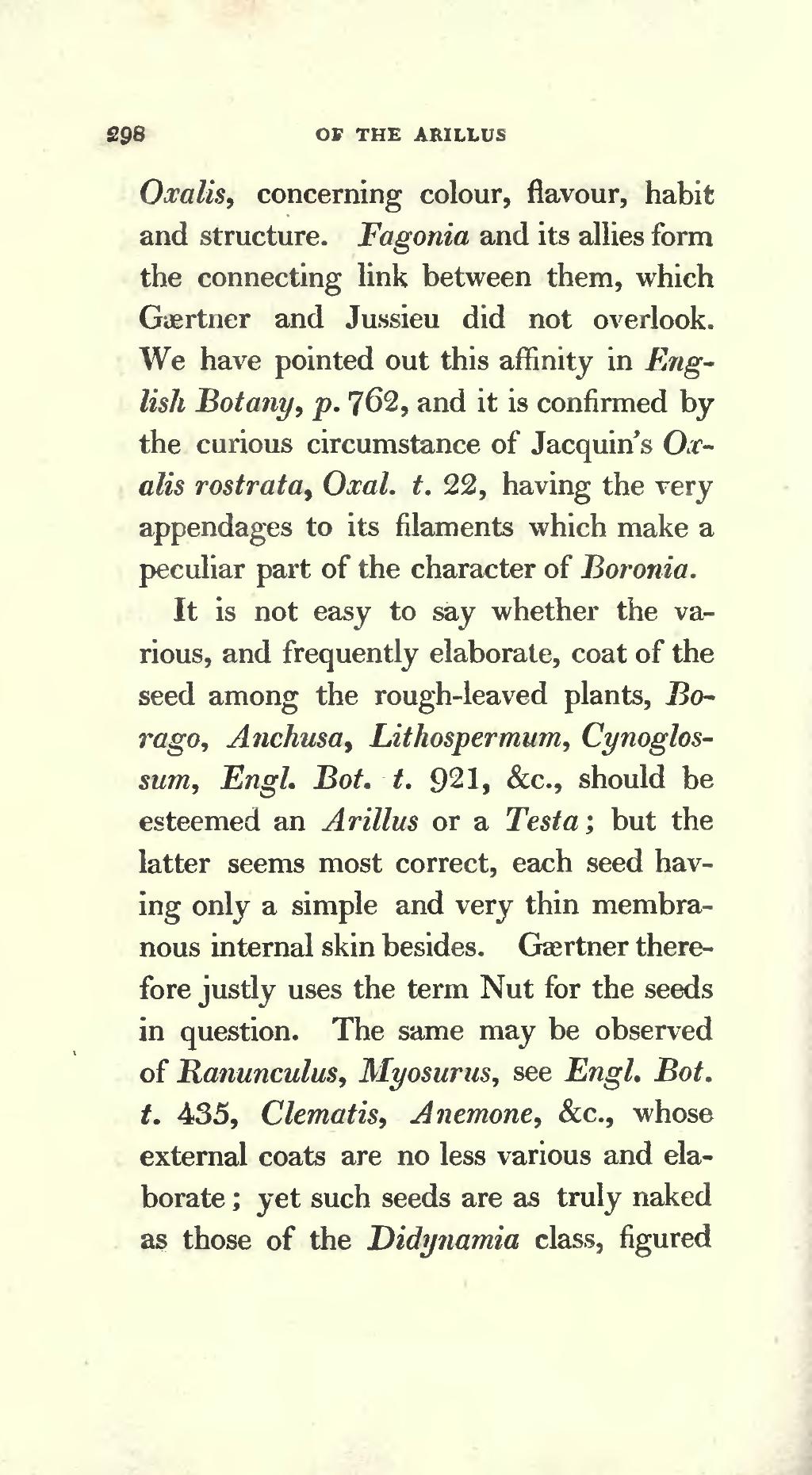Oxalis, concerning colour, flavour, habit and structure. Fagonia and its allies form the connecting link between them, which Gærtner and Jussieu did not overlook. We have pointed out this affinity in English Botany, p. 762, and it is confirmed by the curious circumstance of Jacquin's Oxalis rostrata, Oxal. t. 22, having the very appendages to its filaments which make a peculiar part of the character of Boronia.
It is not easy to say whether the various, and frequently elaborate, coat of the seed among the rough-leaved plants, Borago, Anchusa, Lithospermum, Cynoglossum, Engl. Bot. t. 921, &c., should be esteemed an Arillus or a Testa, but the latter seems most correct, each seed having only a simple and very thin membranous internal skin besides. Gærtner therefore justly uses the term Nut for the seeds in question. The same may be observed of Ranunculus, Myosurus, see Engl. Bot. t. 435, Clematis, Anemone, &c., whose external coats are no less various and elaborate; yet such seeds are as truly naked as those of the Didynamia class, figured

